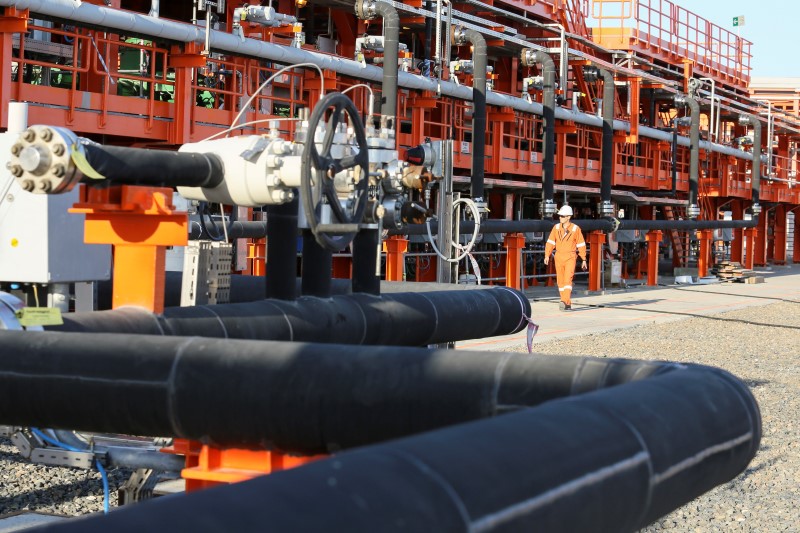Investing.com - Crude oil prices gained in Asia on Monday as the impact of Hurricane Irma was not as severe as expected so far, but still packed a wallop for Florida even as its intensity was downgraded and as investors eyed China crude buying trends in the wake of a strongly stronger yuan.
Hurricane Irma knocked out power to more than 2.4 million homes and businesses in Florida on Sunday, threatening millions more as it crept up the state's west coast, and full restoration of service will take weeks, local electric utilities said.
But after Hurricane Irma hit Florida on Sunday morning as a dangerous Category 4 storm, the second highest level on the five-step Saffir-Simpson scale, it weakened to a Category 2 with maximum sustained winds of 110 miles per hour (177 kph).
The yuan gained to its highest level since May 2016 on Monday, a boon for commodity imports priced in dolalrs that are imported into China such as crude oil.
U.S. West Texas Intermediate (WTI) crude futures rose 0.67% to $47.80 a barrel. Brent crude, the benchmark for oil prices outside the U.S. gained 0.35% to $53.97 a barrel. The global benchmark closed last week with a gain of $1.03, or around 1.9%, after rising to a more than four-month high of $54.87 on Thursday.
Later this week, market participants will eye fresh weekly information on U.S. stockpiles of crude and refined products on Tuesday and Wednesday to further weigh what the impact of recent storm activity was on supply and demand.
Oil traders will also focus on monthly reports from the Organization of Petroleum Exporting Counties and the International Energy Agency to assess global oil supply and demand levels. The data will give traders a better picture of whether a global rebalancing is taking place in the oil market.
Last week, oil prices tumbled on Friday, hit by concern over reduced demand as U.S. refineries saw a slow recovery from flooding due to Hurricane Harvey.
Prices were further weighed as uncertainty gripped the energy market over the potential impact of Hurricane Irma as it approached the U.S.
Two weeks after storm system Harvey knocked out roughly a quarter of U.S. oil refining capacity, refineries along the Gulf coast have been slow to restart, weighing on demand for crude oil, the primary input at refineries.
The dip in demand was reflected in a report from the Energy Information Administration (EIA) on Thursday showing crude stockpiles rose for the first time in ten weeks.
Harvey's impact was also felt in oil production. Oilfield services firm Baker Hughes said on Friday its weekly count of oil rigs operating in the U.S. declined by 3 to 756.
But the slowdown in refining and output should be temporary.
